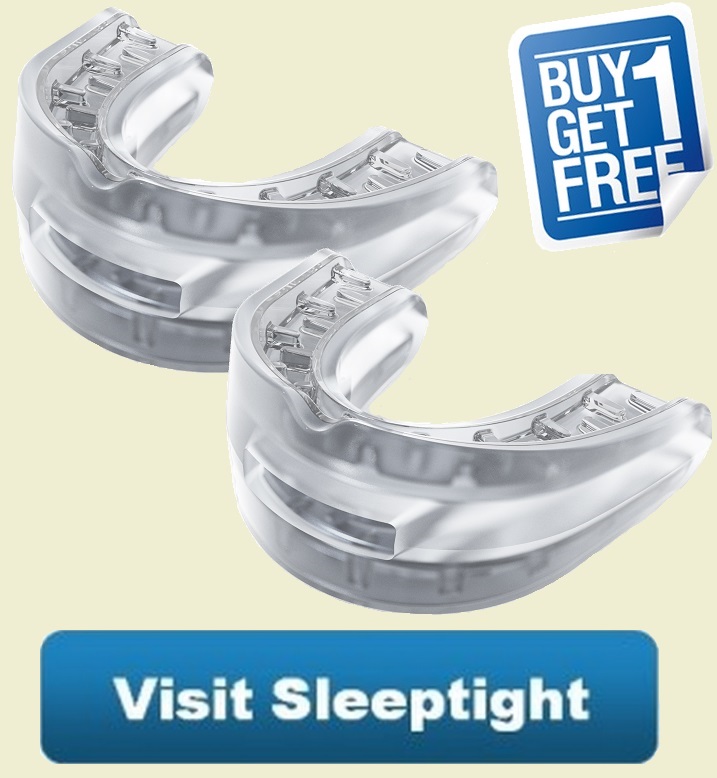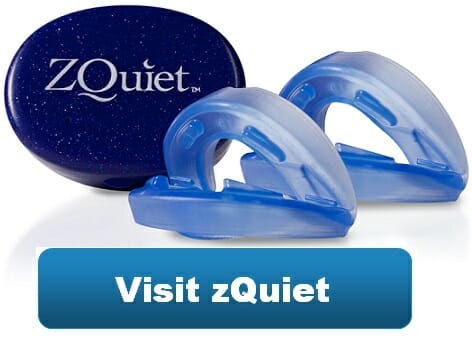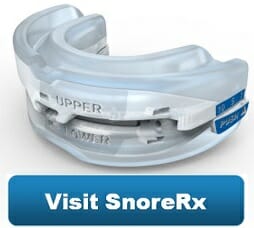What is sleep?
 Before discussing how alcohol causes snoring, it’s important to have a basic understanding of what sleep is and how consuming alcohol affects sleep.
Before discussing how alcohol causes snoring, it’s important to have a basic understanding of what sleep is and how consuming alcohol affects sleep.
Sleep is a normal, cyclical state of unconsciousness from which a person can be quickly awakened. It is as fundamental to life as food and water. Sleep experts theorize that sleep is essential for the renewal of the nervous system, temperature regulation, memory and information processing and energy conservation.
The sleep process consists of a normal cycle between two types of sleep; rapid eye movement, or REM sleep and non-rapid eye movement, or NREM sleep. NREM sleep slows down brain activity, but the body moves. Vital signs such as blood pressure, respiration, and pulse rates are reduced and steady. REM sleep is actually a deeper sleep and looks like an active brain when monitored by an EEG scan. Voluntary muscle movement is minimal, despite the eyes darting back and forth which gives this sleep cycle its name. REM sleep is when dreaming occurs and is thought to be a part of the brain’s information processing function.
Alcohol’s Effect on Sleep
 One of the most pervasive myths regarding sleeplessness is that alcohol induces a good night’s sleep. Alcohol does help people relax and fall asleep faster, but it also gives rise to low sleep quality and decreased time in REM sleep.
One of the most pervasive myths regarding sleeplessness is that alcohol induces a good night’s sleep. Alcohol does help people relax and fall asleep faster, but it also gives rise to low sleep quality and decreased time in REM sleep.
Drinking before bed has several side effects including a lighter sleep marked by repeated awakenings throughout the night. Some individuals report night sweats and vivid dreams. REM sleep, which is a necessary factor in the restorative process of sleep, is decreased early in the night. However, REM sleep does rebound in the second half. Any loss of REM sleep, however, is detrimental.
While alcohol causes people to fall asleep quickly, the NREM portion of the sleep cycle (dreamless sleep) is deeper and longer. Without adequate REM sleep, people wake up feeling fatigued. The greater the amount of alcohol consumed, the longer the period of NREM sleep. Additionally, alcohol consumption causes more awakenings as the night progresses further, diminishing sleep quality.
There are several ways in which alcohol affects sleep including snoring, disruption of REM sleep, insomnia, worsening of sleep apnea and the effect of a hangover on the body. Each of these contributes to poor sleep quality and can lead to health problems.
Alcohol Use and Snoring
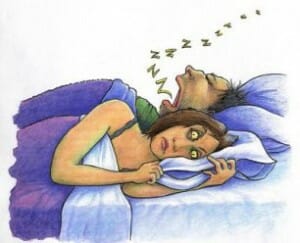 Alcohol is classified as a depressant. Like sedatives, it travels throughout the body and slows the brain’s ability to respond to stimuli. Its sedative effect causes a deeper relaxation of muscles than normal sleep. As a result, the oropharynx (the back of the throat) folds faster when compared to that of a sober individual. The collapse of the oropharynx is one of the prime reasons for snoring.
Alcohol is classified as a depressant. Like sedatives, it travels throughout the body and slows the brain’s ability to respond to stimuli. Its sedative effect causes a deeper relaxation of muscles than normal sleep. As a result, the oropharynx (the back of the throat) folds faster when compared to that of a sober individual. The collapse of the oropharynx is one of the prime reasons for snoring.
While snoring is annoying to bedmates and causes disruption, some people are affected by sleep apnea after drinking. Sleep apnea occurs when an individual temporarily stops breathing during sleep. The body’s response is to gasp for air to obtain oxygen. The resulting gasp resembles a loud snore.
While this differs from a clinical diagnosis of sleep apnea, it still causes for concern particularly if the individual drinks alcohol frequently before bed. People affected by this temporary sleep apnea often find they awaken feeling short of breath or extremely fatigued the next day.
Alcohol and Sleep Issues
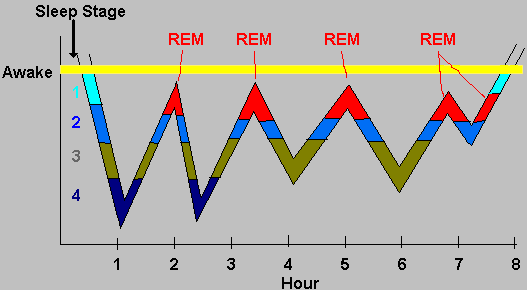 Aside from temporary sleep apnea, fragmented sleep (defined as frequent awakenings throughout the night) and difficulty maintaining sleep (DIS) are common problems for those who drink before bed. For those who use alcohol to fall asleep, they may find that stopping this practice results in insomnia.
Aside from temporary sleep apnea, fragmented sleep (defined as frequent awakenings throughout the night) and difficulty maintaining sleep (DIS) are common problems for those who drink before bed. For those who use alcohol to fall asleep, they may find that stopping this practice results in insomnia.
No matter how much or how little alcohol is consumed, it causes shorter sleep cycles for the first half of the night, followed by increased disruptions in the second half. The more alcohol consumed, the longer individuals remain in NREM sleep. While NREM does promote rest in the body, it increases the potential for sleep apnea and sleepwalking.
REM sleep, as previously mentioned, is vital for the brain to process information and memory. A lack of REM can significantly reduce one’s ability to concentrate and well as reduce motor skills and memory. Since REM sleep accounts for 20 to 25 percent of total sleep time, inadequate REM sleep has a significant impact on conscious cognitive abilities.
The delay in REM sleep occurs even if little alcohol is consumed. This delay means a decrease in the restorative aspects of sleep. This delay is the same type that is exhibited in individuals under an excessive amount of stress or who are suffering from depression. Experts believe that the impact of alcohol on REM sleep explains the improvement in mood and decrease in anxiety that is associated with alcohol use.
The Hangover Effect
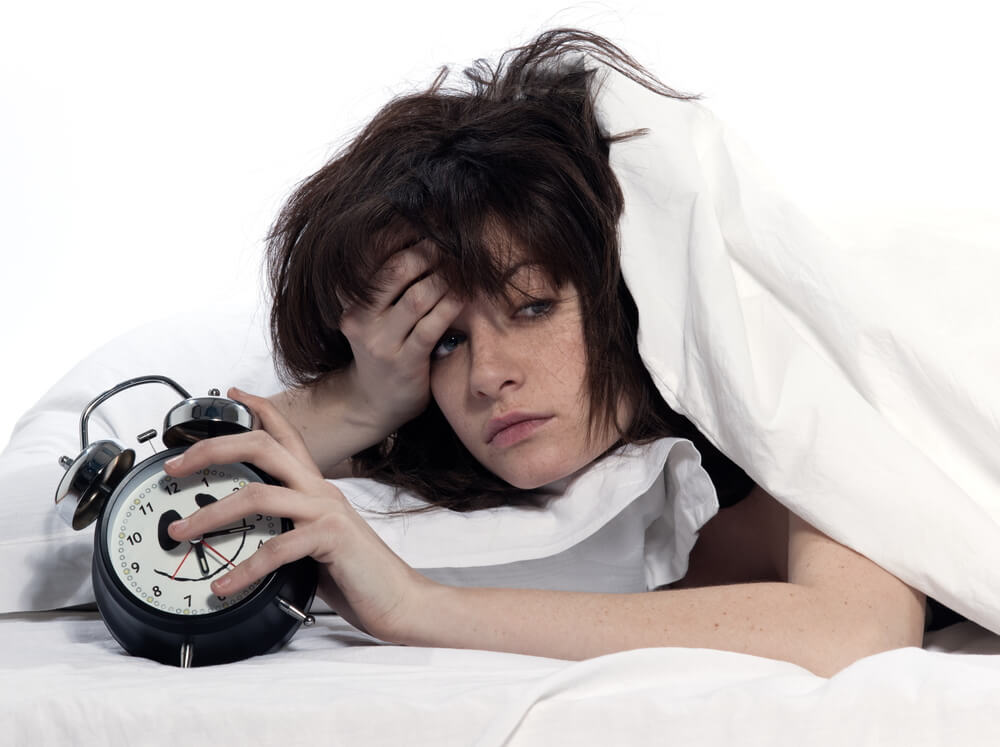 Researchers have found a connection between obstructive sleep apnea and alcohol. Since alcohol suppresses breathing, it affects the breathing center in the brain by masking decreased oxygen levels in the body, creating the possibility of tissue damage.
Researchers have found a connection between obstructive sleep apnea and alcohol. Since alcohol suppresses breathing, it affects the breathing center in the brain by masking decreased oxygen levels in the body, creating the possibility of tissue damage.
As previously noted, usually non-snoring individuals can succumb to snoring after drinking. Alcohol is metabolized quickly by the liver dropping the level of alcohol in the system to near zero midway through the night. The byproducts, or metabolites, remain in the bloodstream and the effects of alcohol on the body are still present. These metabolites are what cause the hangover. Some hangover symptoms can be attributed to breathing difficulties while sleeping.
Despite its sedative effect on the body, alcohol does not produce a good night’s sleep. While it can help individuals fall asleep quickly, the quality of sleep is compromised since it increases the number of times people awaken during the second half of the night.
Alcohol’s sedative effect makes muscle relaxation more pronounced, particularly around the breathing structures. Snoring is the body’s way of counteracting this relaxation in an effort to pull more oxygen into the system. Some individuals may experience temporary sleep apnea causing them to stop breathing and have their oxygen levels drop repeatedly throughout the night. For those individuals with a diagnosed case of sleep apnea, alcohol can exacerbate symptoms creating increased breathing difficulties.
5 Ways to Reduce the Effects of Alcohol on Snoring
The best way to eliminate the effects of alcohol on snoring is obviously to avoid the use of alcohol altogether. However, if you do decide to drink alcoholic beverages, there are a few ways that you can reduce the effects of snoring.
- Drink in Moderation – For those under the age of 65, the Dietary Guidelines for Americans recommends that men keep their drinking to 2 drinks per day while women should limit it to 1 per day. Men over the age of 65 should not consume more than one drink per day. If you decided to have more than the recommended amount, space each beverage out an hour from each other. Drinking a glass of water in between helps to space drinks out while keeping you hydrated. Wait 3 or more hours between your last drink and going to bed.
- Eat a Meal Beforehand – It’s always important to eat a meal before you begin to consume any beverages. Food helps to absorb the alcohol so that it does not have such an immediate dramatic effect on your body. Plan your evening to include food and if possible, allow your meal to digest for a several minutes before drinking to avoid bloating and discomfort.
- Avoid Eating Food Before Bed – While eating is an important consideration before drinking, eating before bed (especially large quantities of food) can exacerbate snoring caused by the consumption of alcohol. It can also cause indigestion, including acid reflux.
- Sleep on Your Side – A surprising number of people are actually positional snorers, meaning that they snore only in certain positions. This is especially true for those who snore only after consuming alcohol. After having a few drinks, try sleeping on your side to reduce the sound of snoring caused by alcohol consumption. Try using a tennis ball to help keep your body in position.
- Use a Snoring Mouthpiece – The Mandibular Advancement Device, also known as a “Snoring Mouthpiece” help to silence snoring by holding the jaw forward as you sleep which opens the airway. Alcohol is a sedative that relaxes airway muscles. Loose airway tissues tend to flap against each other, causing the sound of snoring. A snoring mouthpiece has been proven to tighten the airway and can help to eliminate the sound of snoring. A comprehensive list of snoring mouthpieces that I have personally tested and reviewed can be found here.

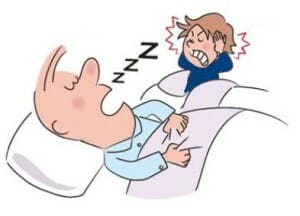 As a snorer, you might be interested in having a better understand why snoring occurs. This has been a topic of debate among medical professionals for several years now. As it turns out, there are actually
As a snorer, you might be interested in having a better understand why snoring occurs. This has been a topic of debate among medical professionals for several years now. As it turns out, there are actually 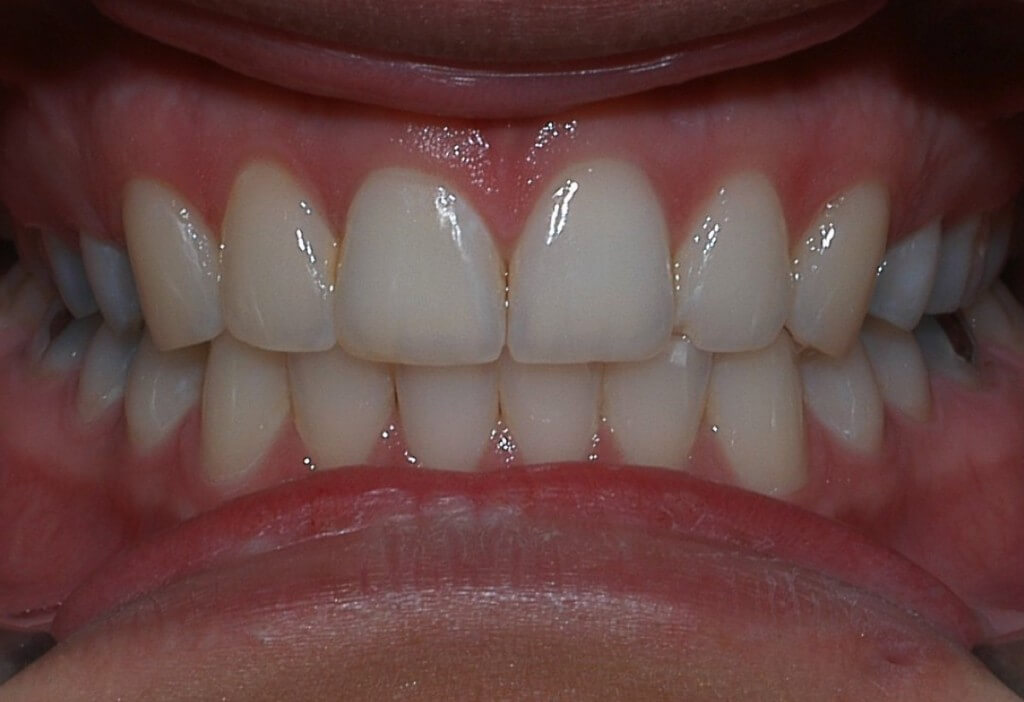

 One who has a severe overbite my rush to the conclusion that
One who has a severe overbite my rush to the conclusion that 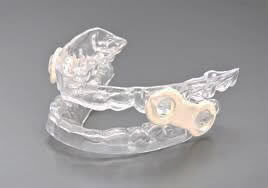

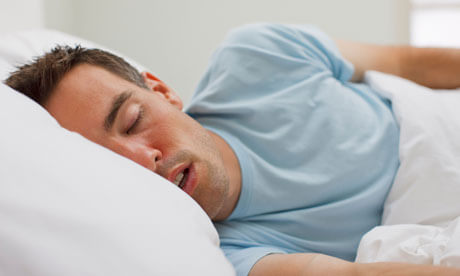 Positional therapy is a concept that many snoring and obstructive sleep apnea suffers have likely never even heard of. It’s a very simple method that can effectively eliminate snoring and in some cases, prevent mild OSA from occurring. This noninvasive technique costs little to nothing to try and is often overlooked by many who bypass this simple solution while seeking more popular methods such as the CPAP machine or oral appliances.
Positional therapy is a concept that many snoring and obstructive sleep apnea suffers have likely never even heard of. It’s a very simple method that can effectively eliminate snoring and in some cases, prevent mild OSA from occurring. This noninvasive technique costs little to nothing to try and is often overlooked by many who bypass this simple solution while seeking more popular methods such as the CPAP machine or oral appliances.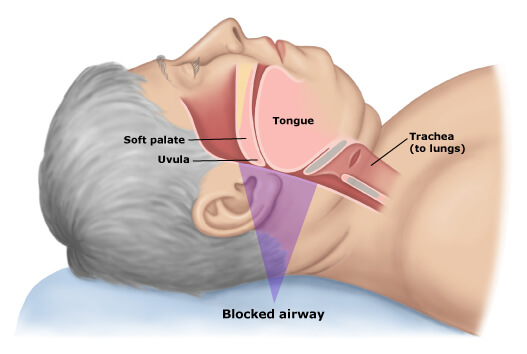 Having a basic understanding of why
Having a basic understanding of why  The least expensive solution is to
The least expensive solution is to 
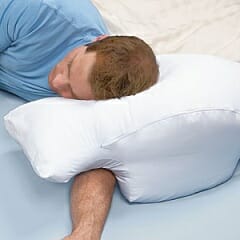 A similar bumper belt device can be fashioned at home by filling a lightweight backpack with foam, bubble wrap or packing peanuts and then securing it to the back before going to sleep. This less expensive method can be just as effective yet created for a fraction of the price.
A similar bumper belt device can be fashioned at home by filling a lightweight backpack with foam, bubble wrap or packing peanuts and then securing it to the back before going to sleep. This less expensive method can be just as effective yet created for a fraction of the price.
 Unfortunately, side sleeping does not work for everyone. It’s estimated that up to 60% of snorers are positional snorers. The other 40% will have to look elsewhere for relief.
Unfortunately, side sleeping does not work for everyone. It’s estimated that up to 60% of snorers are positional snorers. The other 40% will have to look elsewhere for relief.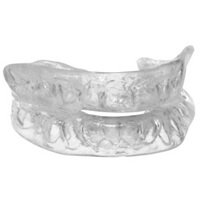
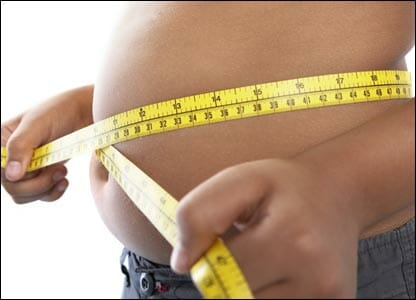
 When overweight, it’s easy to look into the mirror and see all of the areas where your body is storing extra fat. Genetics and gender both play an important role when it comes to the areas where our body decides to deposit extra fat. Some retain weight in the neck, stomach, hips, butt, or thighs while others may store fat under the arms, sides, calves or chest.
When overweight, it’s easy to look into the mirror and see all of the areas where your body is storing extra fat. Genetics and gender both play an important role when it comes to the areas where our body decides to deposit extra fat. Some retain weight in the neck, stomach, hips, butt, or thighs while others may store fat under the arms, sides, calves or chest.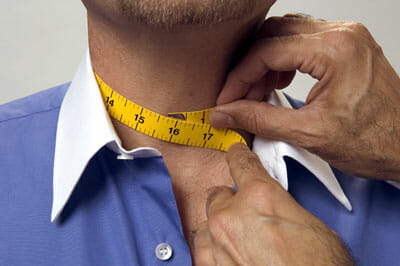 It’s often said that men tend to snore than women. Why is this the case?
It’s often said that men tend to snore than women. Why is this the case? If you snore and are overweight, you may be interested in taking steps to eliminate your snoring. The first logical approach is to lose some weight, right? This leads to the question of weight loss as it relates to snoring. Will losing weight stop your snoring?
If you snore and are overweight, you may be interested in taking steps to eliminate your snoring. The first logical approach is to lose some weight, right? This leads to the question of weight loss as it relates to snoring. Will losing weight stop your snoring?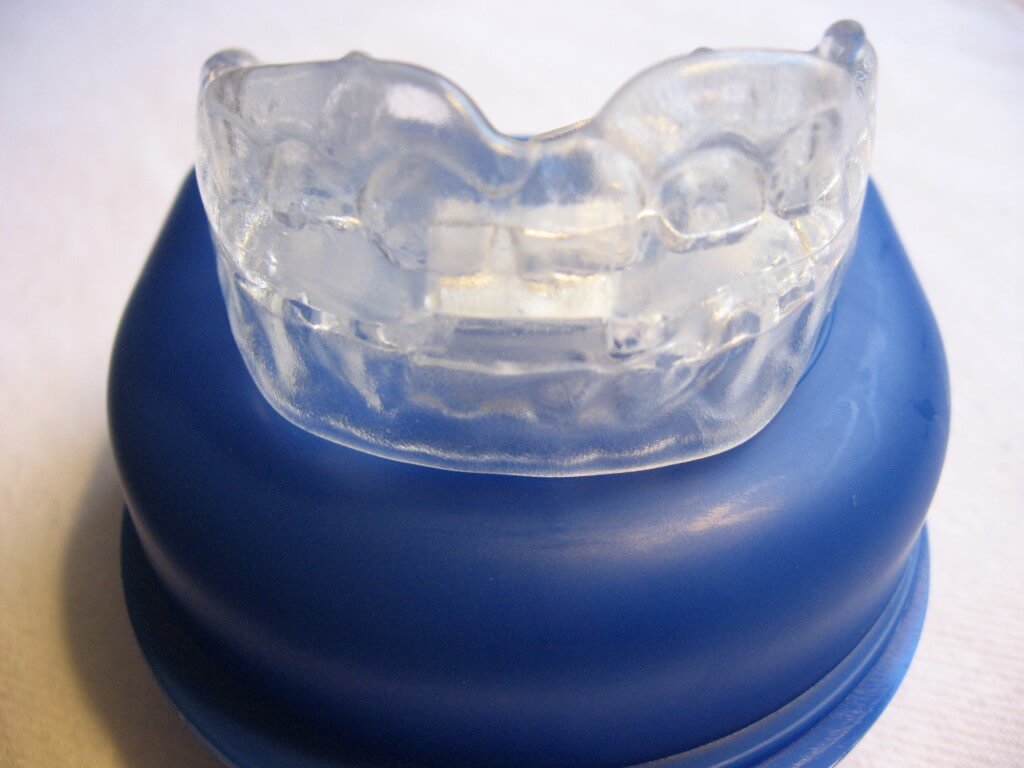
 While searching for a stop snoring solution, you may have encountered a few manufacturers who are selling chin straps that promise a better night of sleep and an end to your snoring. Can a chinstrap really help to prevent snoring? This is an excellent question that deserves a thoughtful answer.
While searching for a stop snoring solution, you may have encountered a few manufacturers who are selling chin straps that promise a better night of sleep and an end to your snoring. Can a chinstrap really help to prevent snoring? This is an excellent question that deserves a thoughtful answer. Exactly how does a simple elastic strap stop snoring in its tracks? While claims vary slightly from one manufacturer to another, most manufacturers suggest that the sound of snoring is eliminated by holding the jaw forward and closed. If snoring comes from the mouth then sealing up the source of those pesky sounds should eliminate the problem, right?
Exactly how does a simple elastic strap stop snoring in its tracks? While claims vary slightly from one manufacturer to another, most manufacturers suggest that the sound of snoring is eliminated by holding the jaw forward and closed. If snoring comes from the mouth then sealing up the source of those pesky sounds should eliminate the problem, right?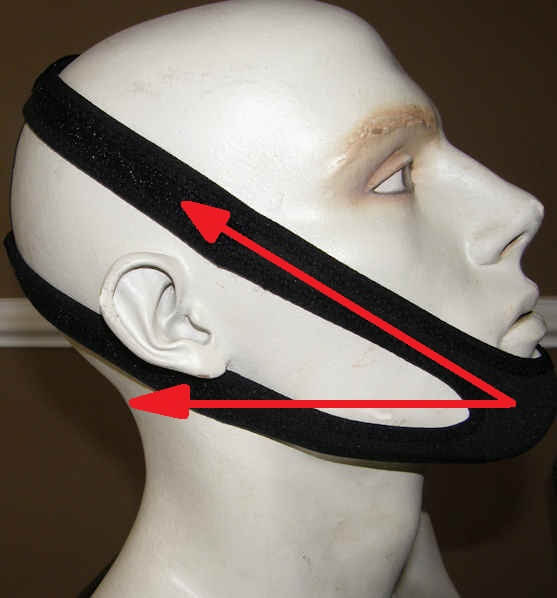
 Without addressing the underlying issue, snoring will still occur. The sounds of snoring will transmit through the throat and nasal area.
Without addressing the underlying issue, snoring will still occur. The sounds of snoring will transmit through the throat and nasal area. The cost of a snoring chin strap seems to vary substantially from one manufacturer to another while the overall design of each is very similar. On the less expensive side, a chin belt is purchased for around $7.00. The more expensive chinstraps will set you back about $120.00. These prices do not include shipping costs.
The cost of a snoring chin strap seems to vary substantially from one manufacturer to another while the overall design of each is very similar. On the less expensive side, a chin belt is purchased for around $7.00. The more expensive chinstraps will set you back about $120.00. These prices do not include shipping costs. By now you may be wondering if snoring chin straps are a scam. As discussed, they seem to serve no purpose when it comes to controlling snoring. In addition, there is an overwhelming amount of negative feedback spanning the internet concerning the ineffectiveness of this product.
By now you may be wondering if snoring chin straps are a scam. As discussed, they seem to serve no purpose when it comes to controlling snoring. In addition, there is an overwhelming amount of negative feedback spanning the internet concerning the ineffectiveness of this product. Perhaps you have been told by your doctor that you simply snore. What options do you have?
Perhaps you have been told by your doctor that you simply snore. What options do you have? Does phrase sound familiar? If you have recently visited the Puresleep website in search of a snoring mouthpiece you have likely become frustrated trying to figure out exactly how much the Puresleep really costs.
Does phrase sound familiar? If you have recently visited the Puresleep website in search of a snoring mouthpiece you have likely become frustrated trying to figure out exactly how much the Puresleep really costs.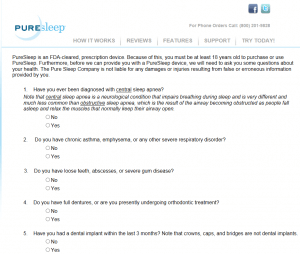
 Seventy dollars? Whatever happened $9.95?
Seventy dollars? Whatever happened $9.95? I
I 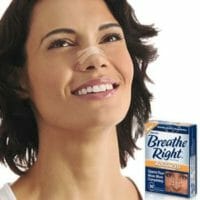 Nasal strips, commonly marketed under the brand “Breathe Right” have been sold worldwide since 1992 and have quickly gained popularity as NFL players were the first to endorse this product. Bruce Johnson, the inventor behind the Breathe Right dilator strips, created this product while in search of relief from his own sinus issues. Bruce suffered from chronic allergies and a deviated septum. One night in 1988 the idea of a drug-free nasal strip came to mind and he decided to further develop the concept. By 1991 his product was ready to launch and in 1992 it hit the ground running. Since then, Breathe Right has been a popular choice among sinus suffers.
Nasal strips, commonly marketed under the brand “Breathe Right” have been sold worldwide since 1992 and have quickly gained popularity as NFL players were the first to endorse this product. Bruce Johnson, the inventor behind the Breathe Right dilator strips, created this product while in search of relief from his own sinus issues. Bruce suffered from chronic allergies and a deviated septum. One night in 1988 the idea of a drug-free nasal strip came to mind and he decided to further develop the concept. By 1991 his product was ready to launch and in 1992 it hit the ground running. Since then, Breathe Right has been a popular choice among sinus suffers.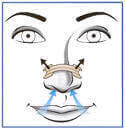 On the surface, nasal strips have a Band-Aid-like appearance. However, they serve a completely different and unique purpose. They work by physically lifting the skin in key areas where your sinuses are located. A flexible strip spans across the bridge of the nose which enables a “lifting” action. The outer edges contains a strong yet gentle adhesive which grabs a hold of your skin as the flexible strip lifts upward. This lifting action is often enough to help open inflamed sinus passages and make breathing much easier. It can provide relief for those with colds, a deviated septum, allergies, or a number of other conditions which cause sinus inflammation. Since the adhesive does not stick to oily skin very well, it’s important to wash your face prior to use in order to ensure that the product sticks to your nose and is effective.
On the surface, nasal strips have a Band-Aid-like appearance. However, they serve a completely different and unique purpose. They work by physically lifting the skin in key areas where your sinuses are located. A flexible strip spans across the bridge of the nose which enables a “lifting” action. The outer edges contains a strong yet gentle adhesive which grabs a hold of your skin as the flexible strip lifts upward. This lifting action is often enough to help open inflamed sinus passages and make breathing much easier. It can provide relief for those with colds, a deviated septum, allergies, or a number of other conditions which cause sinus inflammation. Since the adhesive does not stick to oily skin very well, it’s important to wash your face prior to use in order to ensure that the product sticks to your nose and is effective.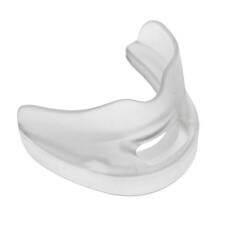 For those who have a snoring condition originating from the soft palate area, nasal strips will not be at all effective. In order to get results, it’s necessary to address the core issue. The Mandibular Advancement Device (MAD), more commonly referred to as a “snoring mouthpiece” has been proven to
For those who have a snoring condition originating from the soft palate area, nasal strips will not be at all effective. In order to get results, it’s necessary to address the core issue. The Mandibular Advancement Device (MAD), more commonly referred to as a “snoring mouthpiece” has been proven to  Breath Right strips usually come in packs of 10-30 and typically cost just under $.50 per unit. They are disposable and can only be used for one night each. Snoring mouthpieces have a useful life of anywhere from a few months to a couple of years. Most mouthpieces last for at least a year on average when properly cared for. A good quality mouthpiece costs around $70 – $100 and can be reused every night. Over the course of a year, disposable nasal strips cost approximately $182 if used every night. In comparison, a mouthpiece that lasts a year costs between $70 – $100. The mouthpiece obviously offers a long-term savings advantage in comparison to nasal strips.
Breath Right strips usually come in packs of 10-30 and typically cost just under $.50 per unit. They are disposable and can only be used for one night each. Snoring mouthpieces have a useful life of anywhere from a few months to a couple of years. Most mouthpieces last for at least a year on average when properly cared for. A good quality mouthpiece costs around $70 – $100 and can be reused every night. Over the course of a year, disposable nasal strips cost approximately $182 if used every night. In comparison, a mouthpiece that lasts a year costs between $70 – $100. The mouthpiece obviously offers a long-term savings advantage in comparison to nasal strips. As mentioned, snoring more commonly originates in the soft palate region and not necessarily the nasal passages. However, in some cases, a simple nasal strip may be an effective solution. Breathe Right strips are a bit less expensive (at first) in comparison to a mouthpiece and could provide relief. If you believe that sinuses are the cause of your snoring problem then nasal strips may be worth a try. These can be purchased at any drug store and most supermarkets.
As mentioned, snoring more commonly originates in the soft palate region and not necessarily the nasal passages. However, in some cases, a simple nasal strip may be an effective solution. Breathe Right strips are a bit less expensive (at first) in comparison to a mouthpiece and could provide relief. If you believe that sinuses are the cause of your snoring problem then nasal strips may be worth a try. These can be purchased at any drug store and most supermarkets.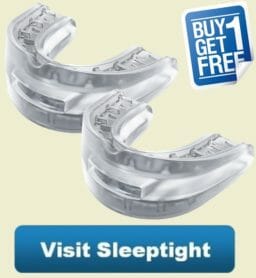
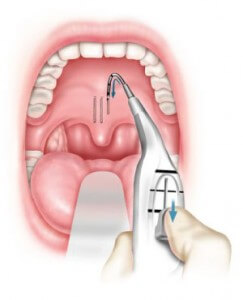 Pillar Procedure: The Medtronic Pillar Procedure is one of the least invasive surgeries and is conducted at your doctor’s office under local anesthetics. The entire procedure takes approximately 15-20 minutes and there is virtually no recovery period. Most people are able to eat or drink within a few hours after the procedure. The actual procedure involves inserting three to five 3/4″ long polyester fiber pillars vertically into the soft pallet using a simple insertion device. These pillars cause hard scar tissue to form around the soft palate within 3-12 months. The scar tissue stiffens the soft palate which reduces vibration and movement. You can learn more about the Pillar Procedure
Pillar Procedure: The Medtronic Pillar Procedure is one of the least invasive surgeries and is conducted at your doctor’s office under local anesthetics. The entire procedure takes approximately 15-20 minutes and there is virtually no recovery period. Most people are able to eat or drink within a few hours after the procedure. The actual procedure involves inserting three to five 3/4″ long polyester fiber pillars vertically into the soft pallet using a simple insertion device. These pillars cause hard scar tissue to form around the soft palate within 3-12 months. The scar tissue stiffens the soft palate which reduces vibration and movement. You can learn more about the Pillar Procedure 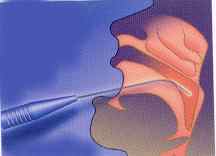 Radiofrequency Palatoplasty: This fairly new procedure works by using the same principle as the Pillar Procedure but does so using electrical current. During the procedure, the soft palate and the uvula are shrunk and stiffened using a special device.
Radiofrequency Palatoplasty: This fairly new procedure works by using the same principle as the Pillar Procedure but does so using electrical current. During the procedure, the soft palate and the uvula are shrunk and stiffened using a special device. 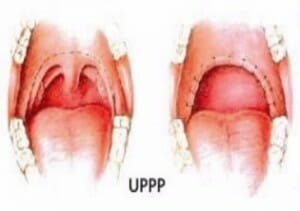 Uvulopalatopharyngoplasty (UPPP): The
Uvulopalatopharyngoplasty (UPPP): The 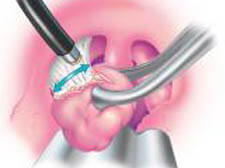
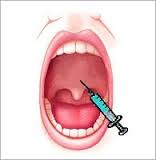
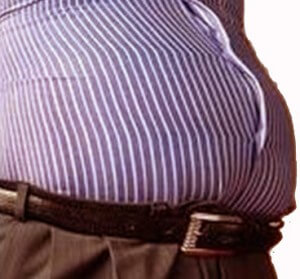 Lose weight: In many cases, snoring can be reduced or even eliminated by simply losing weight. If you are overweight or obese, shedding a few pounds will not only be beneficial when it comes to snoring but will also benefit your overall health. How is being overweight related to snoring? When overweight, excess fatty tissues tend to become stored around the neck. This extra tissue will often flap around or cause a partial blockage of the airway. Men are more susceptible to snoring simply because the neck is one of the most common places where fat tends to accumulate.
Lose weight: In many cases, snoring can be reduced or even eliminated by simply losing weight. If you are overweight or obese, shedding a few pounds will not only be beneficial when it comes to snoring but will also benefit your overall health. How is being overweight related to snoring? When overweight, excess fatty tissues tend to become stored around the neck. This extra tissue will often flap around or cause a partial blockage of the airway. Men are more susceptible to snoring simply because the neck is one of the most common places where fat tends to accumulate. So you’ve seen multiple TV commercial sales pitches for the $9.99 mouthpiece that is supposed to put an end to your snoring. You immediately begin to question whether or not this is the true price of the product. The reality is, the price mentioned on most of these commercials is the price that you will pay to try the device out. Usually, if you don’t return the device within the 30 day trial period your credit card is charged for the remainder of the balance.
So you’ve seen multiple TV commercial sales pitches for the $9.99 mouthpiece that is supposed to put an end to your snoring. You immediately begin to question whether or not this is the true price of the product. The reality is, the price mentioned on most of these commercials is the price that you will pay to try the device out. Usually, if you don’t return the device within the 30 day trial period your credit card is charged for the remainder of the balance. Another example is the
Another example is the  The truth is, most
The truth is, most  While there are several dozen different variations of mouthpieces on the market, almost all of them work the same way. They all resemble a sports mouthguard with both an upper and lower tray. When inserted into the mouth the lower tray gently pushes out on the lower teeth, providing a
While there are several dozen different variations of mouthpieces on the market, almost all of them work the same way. They all resemble a sports mouthguard with both an upper and lower tray. When inserted into the mouth the lower tray gently pushes out on the lower teeth, providing a  One common question that people often ask me is “Which mouthpiece should I buy?”. As previously mentioned, there are several excellent devices on the market that are all effective when it comes to treating snoring. While I don’t favor one device, in particular, I have created a resource page that mentions a few
One common question that people often ask me is “Which mouthpiece should I buy?”. As previously mentioned, there are several excellent devices on the market that are all effective when it comes to treating snoring. While I don’t favor one device, in particular, I have created a resource page that mentions a few 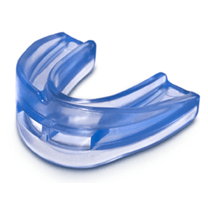 Breathable devices are typically equipped with holes, slots, or simply a space at the front of the device which allows air to pass in and out of the mouth. Others have a hinge design which allows the device to move with your mouth, letting air in and out. Either way, they provide snoring relief while allowing the free movement of air.
Breathable devices are typically equipped with holes, slots, or simply a space at the front of the device which allows air to pass in and out of the mouth. Others have a hinge design which allows the device to move with your mouth, letting air in and out. Either way, they provide snoring relief while allowing the free movement of air.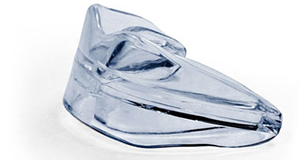 Non-Breathable snoring devices can appear similar in nature to their counterpart yet do not allow the user to breathe freely through the mouth. They are often solid, one piece oral appliances without any holes, slots, spaces, or hinges. The lack of a breathing option is not necessarily a bad thing. They are still effective and can offer the added benefit of preventing dry mouth. Non-breathable devices can be a great choice if one’s sinuses allow for nasal breathing.
Non-Breathable snoring devices can appear similar in nature to their counterpart yet do not allow the user to breathe freely through the mouth. They are often solid, one piece oral appliances without any holes, slots, spaces, or hinges. The lack of a breathing option is not necessarily a bad thing. They are still effective and can offer the added benefit of preventing dry mouth. Non-breathable devices can be a great choice if one’s sinuses allow for nasal breathing.